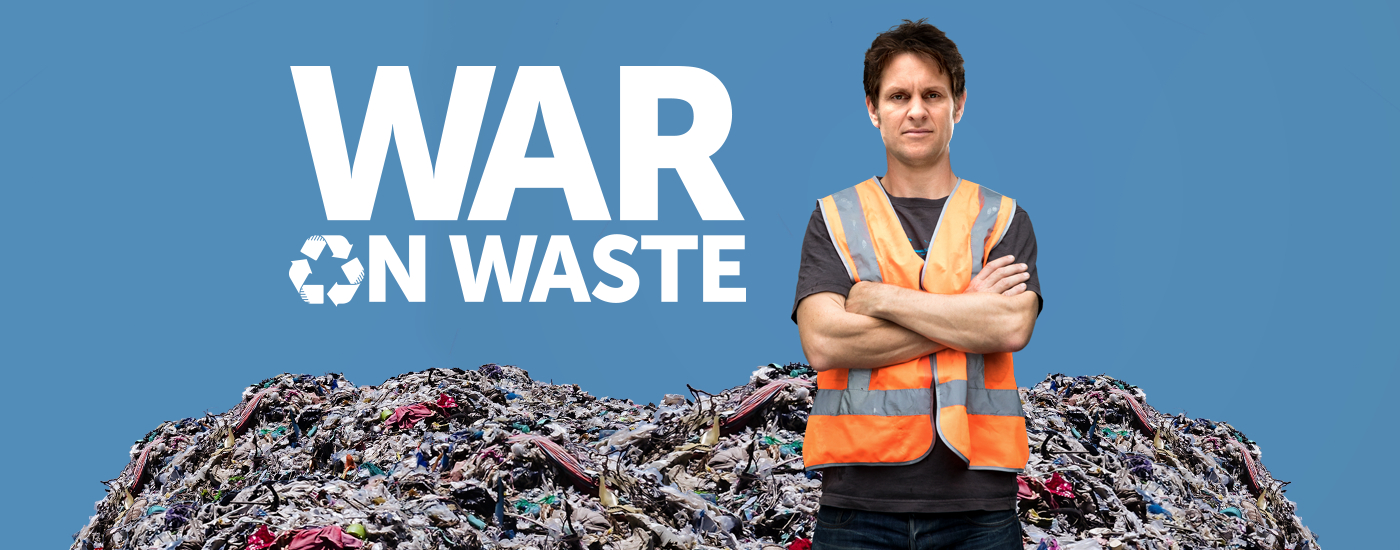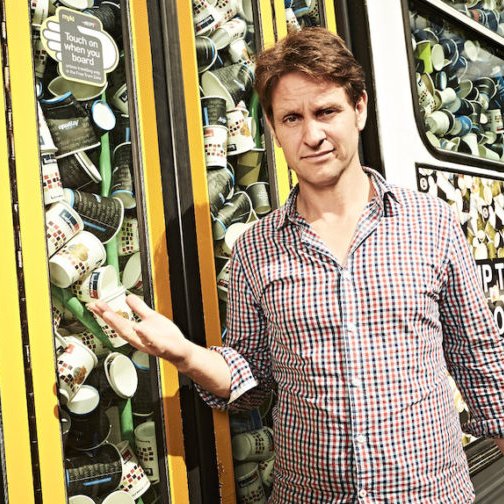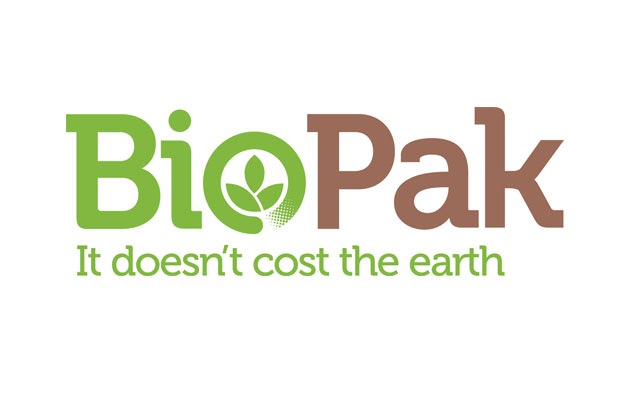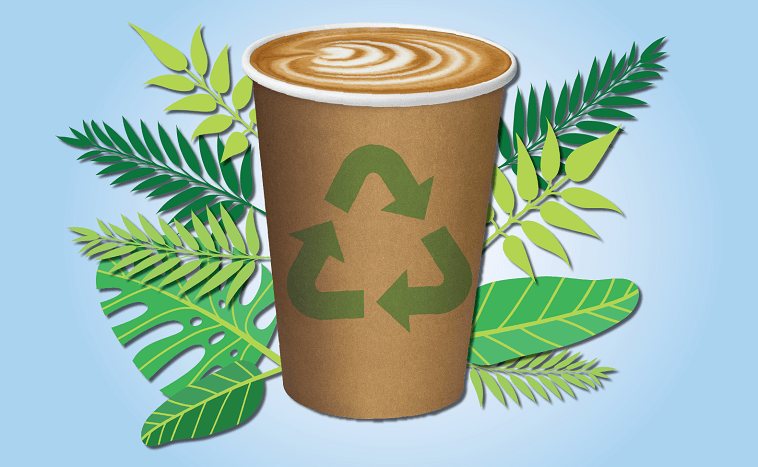The Truth About Disposable Coffee Cups & The ABC's War on Waste
- 19 June 2017
DISPOSABLE COFFEE CUPS, RECYCLING & THE WAR ON WASTE - IT'S MORE COMPLICATED THAN YOU THINK
The ABC’s War on Waste documentary, presented by Craig Reucassel (The Chaser), took a closer look at the Australian coffee industry, examining the impact of disposable coffee cups on the environment.
The ultimate conclusion presented by Reucassel in the documentary stated 1 billion disposable paper cups, used for take away coffee, are not recyclable and end up in landfill. The response from the Australian public has seen unprecedented demand for reusable cups and created a nationwide discussion about the sustainable practices of our daily grind.
While cafes are feeling the heat of this demand, no one is feeling it more than KeepCup, which has experienced a 690% increase in sales enquiries since the show aired.
“We knew [War on Waste] would be talking about coffee cups so we were expecting a bit of a spike, but not to this extent. It crashed our website, and we’ve had all our cafes screaming for stock,” explains KeepCup co-founder and managing director, Abigail Forsyth.
Forsyth told Smart Company, “A lot of people weren’t aware that we exist as a pretty good solution to this problem. Also, the awareness that we’re an Australian made product has been helping drive the demand [too].”
As neat and tidy a conclusion as this is, the story doesn’t end there. BioPak, one of the most notable manufacturers of recyclable coffee cups, has released a statement to share their side of the sustainability narrative.
The statement reads:
“ABC’s War on Waste series has raised awareness that we, as a country, have a tendency to irresponsibly consume without thinking of the environmental or social consequences. It has also exposed a problem with the recycling industry.
Paper coffee cups account for only 0.5% of the 3.2 million tons of paper consumed in Australia every year. Currently Australians send around 1.7 million tons of recyclable paper to landfill, this includes 12,000 tons of coffee cups. Compare Australia’s current 45% paper recycling rate to some countries achieving a 75% rate and it’s clear to see we have a problem that is bigger than coffee cups.
There is also confusion about whether paper cups are recyclable or not. The claims that no paper cups are recycled in Australia as presented in the War on Waste are simply not true.
PAPER CUPS ARE RECYCLABLE!
Some recyclers say they will not accept paper cups as they are unable to separate the plastic from the paper fibres, yet these very same companies accept paper milk and juice cartons which are made from the same components as coffee cups – plastic coated paper board. We have written on this in more detail in our blog.
We have compiled a list of councils who have confirmed to us in writing that they accept paper cups for recycling. This fact was recently verified by Planet Ark and The Australian Packaging Covenant.”
RECYCLABLE OR NOT RECYCLABLE – THAT IS THE QUESTION?
So what’s the deal then? Are paper cups recyclable or are they not?
This is a contentious issue within the recycling industry itself and there is no black or white answer here to make it easier for consumers. Organisations such as Planet Ark have weighed in on the matter to highlight the difficulties faced within the industry:
“Whether coffee cups are recyclable or not is one of the most controversial questions in the recycling industry at the moment. The cups are made by covering cardboard with a thin layer of plastic to make it waterproof. The cups are pretty much the same material as milk and juice cartons which are accepted in recycling almost everywhere.’
‘How the cardboard and plastic behave in the recycling process – particularly during pulping - is the source of all the controversy. If the cardboard fibres remain attached to the plastic they can’t be turned back into paper products and therefore become a waste product.”
The Australian Packaging Covenant has added to the discussion with an in-depth report into how a staggering 92% of disposable cups found their way to land fill in 2013/2014, and how to prevent it in future. Their conclusion: decisive action and community education.
An Issues Paper (the outcome of a working group on this type of disposable packaging) found that, contrary to belief, take away coffee cups can go into paper recycling and their lids can be recycled along with plastics. This means the biggest contributing factor to coffee cups going to landfill is community misconceptions.
APCO Chief Executive Officer, Trish Hyde, said with an estimated 1.2 billion coffee cups used in Australia each year, it was necessary to tackle this complex and often confusing issue of which bin to put these cups in, “The community is currently receiving many mixed messages about whether their coffee cup can be recycled or not. Because the actual cup is made from paperboard with a plastic lining, typically polyethylene, there was concern that this mixed material presents issues for recycling facilities.”
However, after looking into the matter further, they came to a different conclusion. Ms Hyde explains, “Our members include material recovery and recycling facilities. Through the working group, we resolved that coffee cups can be recycled. However, we also know that there is more work to do to ensure that recyclers receive fair value in recycling this material.”
She continued, “Now that we have opened up this discussion, our next steps will be to work with industry to look at ways to increase the recycling of coffee cups and this will include more research and investigation as well as recommendations to also look at community education.”
BUT ISN’T PLASTIC BAD?
One thing we are becoming more aware of as a nation and global community is the incredible impact plastic as a material has on the environment. At this point, it would be easy to dismiss the matter by saying the paper is coated in plastic and plastic is terrible for the environment, so disposable cups are bad. However, the plastic coating itself is something we need to discuss too.
BioPak explains the plastic used in their own cups is a PLA bioplastic. PLA bioplastic, also known as polylactic acid, is made from corn starch using renewable resources and is compostable and biodegradable. BioGreenChoice.com explains comprehensively the benefits of using PLA and claims that PLA products take up to 6 months to degrade in commercial composting facilities and longer if you are composting them at home.
According to BioPak, “Currently less than 5% of total global annual use of hot paper cups – (approximately 4 billion units) are coated with PLA. PLA coated cups do cost more than conventional cups – up to 30% more – but with the average cost of a paper cup at around 8 cents it translates to an additional 2 cents per cup – a small price to pay in order to enjoy the convenience of consuming your favourite beverage on the go, in a sustainably produced product that can be diverted from landfill.”
Some other facts about PLA from BioPak:
-PLA bioplastic is made from rapidly renewable resources, not oil
-The production of PLA bioplastic emits up to 75% less CO2 than conventional plastics – this fact alone makes this material a more sustainable option than the conventional plastic it replaces
-PLA bioplastic is commercially compostable – allowing the packaging along with any food residues to be diverted from landfill
-Unlike regular plastic coated paper, the PLA bioplastic coating dissolves in the paper recycling process with no special equipment required.
For a more fun way to learn about PLA and BioPak’s disposable cups, check out the infographic below:
CONCLUSION – ARE DISPOSABLE CUPS OKAY OR ARE KEEPCUPS THE WAY TO GO?
Ms Hyde says it best I think: “Consumers have a choice. They can bring their own cup to the café or recycle their coffee cups. It’s about supporting industry, across the entire supply chain from coffee shop owners to brand owners to recycling facilities to create sustainable packaging solutions.”
When addressing genuinely complex issues of environmental sustainability, there is no one way to approach or fix the issue and the best way forward is usually to use a mixed method approach. It would be great if every customer had their own KeepCup, but what about those who didn’t watch documentaries like the War on Waste or more frankly, don’t care? What about the days you forget your cup? What about the interim between an old or broken cup and a new one, especially if you can’t afford to buy one straight away? Or what about people who really can’t justify the cost of a reusable cup?
Reality is a tough mistress and the reality here is it’s going to be a long time before all cafes could feasibly entertain the idea of 100% getting rid of disposable coffee cups. This means we need to have a way of dealing with them properly and sustainably, as well as encouraging customers to jump on the KeepCup bandwagon.
Here at Crema Coffee Garage for example, we buy BioPak cups for our disposable take away cups AND encourage our customers to get themselves a KeepCup by offering THREE FREE COFFEES with each cup they buy and 50c off each coffee thereafter when they bring their cup in.
Many cafes are also taking a similar approach, offering a free coffee when they buy a cup, while other bolder cafes are taking the plunge to stop serving disposable cups altogether. The result of this sink or swim approach is yet to be seen, but whether it fails or succeeds, this moment in time is setting a benchmark for the industry.
For more information on this topic, you can check out BioPak, Planet Ark, or the Australian Packaging Covenant.










